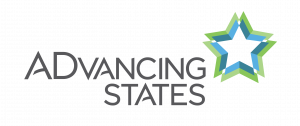Nursing Facility Transitions
WYOMING
Identified Problems with the State's Long-Term Care System
- Lack of affordable, accessible housing.
- Shortage of personal assistance workers.
- Lack of resources for facilitating the transition process.
- Lack of information for consumers about community options.
- Lack of caregiver training and support.
- Professional and familial resistance to transitions.
- Lack of transportation services necessary for medical and other needs.
- Lack of community alternatives for nursing home residents with dementia.
- Lack of funding mechanisms to ensure funding follows the person during and after transition.
Perceived Strengths
- "Single point of entry" system: the state's access system for entry into the Medicaid-sponsored long-term care services provides assistance to the state's elderly and disabled populations in selecting the services that will best meet their needs.
- Easy to partner with a variety of organizations and state agencies concerned with the welfare of the Medicaid recipient. For the development of this project, there are 16 consumer-oriented agencies.
- Exceptional Public Health Nursing System (PHN) which provides communicable disease investigations and treatment, health status monitoring and health education.
- LTC Nursing Home Ombudsman which promotes a statewide system addressing adults' rights in the long-term care setting, elder abuse awareness and legal assistance.
- All adults with disabilities or long-term illness in the state have access to a choice of coordinated services that enhance their lives, foster self-sufficiency, and maintain them in the least restrictive most cost effective environments.
Primary Focus of Grant Activities
- Transition ten individuals in a pilot project.
- Develop an infrastructure for community services to support people once transitioned.
- Identify barriers and costs associated with transition.
- Develop proposals to improve funding for housing, transportation, and community health and support services.
- Improve the quality of services and supports through training and education.
Goals, Objectives, and Activities
Overall Goal. Develop a model to support nursing home residents who choose to transition to community living.
Goal. Develop the infrastructure for the nursing home transition project.
Objectives/Activities
- Facilitate the participation of multiple partners to assist in the creation of transition services and in planning for future service improvements.
- A transition review team composed of some of the selected partners will be utilized as a vehicle for a grievance procedure, problem solving, and gathering information for the yearly assessment that will be conducted by the University of Wyoming.
- The Wyoming Independent Living Rehabilitation, Inc (WILR) and the Western Wyoming Center for Independent Living (WWCIL) will conduct meetings to gather community input to address concerns and assess the resources of the two pilot project areas of the state.
Goal. Develop work plans at the two CILs.
Objectives/Activities
- Develop assessment tool for consumers and a database to track consumers in transition.
- Transition 10 nursing home residents to communities during the pilot project.
- Develop legislative initiatives which will ensure sustainability of the transition program.
- Address housing issues surrounding transition.
- Address transportation issues surrounding transition.
- Work with PHN and home health agencies to determine methods to provide resource incentives for adequate and quality personal care services to those transitioning to communities from nursing homes.
Goal. Provide education and outreach to stakeholders.
Objectives/Activities
- Develop education and outreach materials in year one for consumer partners, transitioning individuals, vendors who may provide services to transitioning individuals, and public partners. The "Going Home" brochure will be provided to consumer, private and public partners. The "Moving Home" brochure will be available to nursing facility residents, their families, and social workers. The Wyoming Resource Guide for Older Citizens, updated as part of the grant, is provided to any interested party.
- Collaborate with the Wyoming Department of Health and the Aging Division's Olmstead Coordinator to educate consumers, families and partners who provide services within communities.
- Provide training for health professionals, hospital social workers and discharge planners in promoting person-centered planning and community inclusion.
Goal. Develop an infrastructure for community services to support people once transitioned.
Objectives/Activities
- Strengthen adult protection services, in coordination with the State Ombudsmen program to ensure that transitioning elderly do not fall victim to abuse or exploitation, including lobbying for statute changes if necessary.
- Expand the LTC/HCBS Medicaid waiver by adding 150 slots per year in 2003, 2005, and 2007.
- Train staff at senior centers regarding the needs of transitioning consumers.
Goal. Develop statewide transition services to prepare individuals for a change in placement.
Objectives/Activities
- Develop a transition profile for each participant based on their choices and an assessment of the consumer's living situation, independent living skills training needs, and needed supports.
- Utilize temporary stays, including daytime and overnight stays, in a home or community residential facility to assess the person's ability to function independently.
- Provide additional services as needed for individuals to maintain an independent lifestyle in the community.
- Train community supports providers on the individual client's needs prior to start of services.
- Create a standard transition assessment form that will ascertain a participant's readiness to transition into a community setting.
Key Activities and Products
- Conduct monitoring and Quality Assurance activities to be completed through a contract with the University of Wyoming.
- Transition 10 nursing home residents to communities during the pilot project.
- Training and education for all parties involved in transition.
- Creation of standardized transition profile.
- Develop legislative initiatives to ensure sustainability of the transition program and the expansion of community services.
Consumer Partners and Consumer Involvement in Planning Activities
Input from stakeholders included attendees of the community meetings and focus group meetings. Their input included listing barriers and strengths of the communities that they represented.
Consumer Partners and Consumer Involvement in Implementation Activities
WILR has received a transportation voucher pilot program grant award from the Wyoming Governor's Planning Council for Developmental Disabilities (50 percent of council are disabled), which will be evaluated prior to the implementation of the transportation program for the "Project OUT" consumers.
Public Partners
- Wyoming Department of Health, Community and Family Health Division, Public Health Nursing Unit.
- Wyoming Housing Authority.
- Casper Housing Authority.
- University of Wyoming's Wyoming Institute for Disabilities and Wyoming New Options in Technology.
- Wyoming Long-Term Care Ombudsmen program.
Private Partners and Subcontractors
- Wyoming Independent Living Rehabilitation, Inc, (WILR).
- Western Wyoming Center for Independent Living (WWCIL).
Public and Private Partnership Development/Involvement in the Planning Phase
Public Partners
Casper Housing Authority provided input on the feasibility of using Section 8 vouchers for assistance in housing when transitioning residents.
Private Partners
- WILR and WWCIL were very involved in the development of the goals and objectives of the program, the methodology that will be utilized to address the major problems identified in the Grant, and the development of the work plan.
- WILR collaborated with Casper Housing Authority to determine the feasibility of using Section 8 vouchers for assistance in housing when transitioning residents.
Public and Private Partnership Development/Involvement in Implementation
Public Partners
- PHN is responsible for the initial consumer assessment determining medical necessity for long-term care, and will work with the grant to provide incentives for adequate and quality personal care services to those transitioning.
- Wyoming Institute for Disabilities at the University of Wyoming will develop an evaluation tool that will measure and assess every milestone achieved in the program. This instrument will measure the success and accomplishments of the program as well as its shortcomings.
- The State Long-Term Care Ombudsman will coordinate with Project OUT to ensure transitioning individuals do not fall victim to abuse or exploitation.
Private Partners
- WILR and WWCIL will work with the Wyoming Housing Authority to develop a procedure for transitioning individuals seeking Section 8 vouchers and will also collaborate to develop a Web-based database to advertise available housing.
- WILR and WWCIL will also collaborate with other organizations to strengthen the infrastructure for transitioning individuals. WILR and WWCIL will perform program outreach to eligible participants and their families. They will develop and utilize ongoing consumer satisfaction surveys as well, which will be used to generate recommendations and changes suggested by the grant partners.
Existing Partnerships That Will Be Utilized to Leverage or Support Project Activities
Voucher transportation program. WILR has received a transportation voucher pilot program grant award from the Wyoming Governor's Planning Council for Developmental Disabilities, which will be evaluated prior to the implementation of this transportation program for the "Project OUT" consumers.
Oversight/Advisory Committee
- The Transition Review Team/Advisory Council is made up of Aging Division staff, the Director of the Governor's Planning Council on Developmental Disabilities, Home Health, Wyoming Department of Family Services, the State Health Office and the Wyoming Department of Transportation. We are actively looking for consumer participation in conjunction with the CILs.
- The Transition Review Team/Advisory Council will meet at least annually to advise and evaluate the program and assist the Aging Division with updating the plan and assessing the program. They will also serve as the council for reviewing grievances and complaints.
Formative Learning and Evaluation Activities
- The Aging Division will review, analyze and make recommendations to the Project OUT CIL coordinators. The Aging Division will also monitor the project.
- Wyoming Institute for Disabilities at the University of Wyoming (WIND) will develop an evaluation tool that will measure and assess every milestone achieved in the program. This instrument will measure the success and accomplishments of the program as well as its shortcomings. The evaluation will measure consumer satisfaction and cost-effectiveness.
Evidence of Enduring Change/Sustainability
- Funds from Wyoming Department of Transportation will allow for the continuation of the transportation voucher system after the grant period has ended.
- The Alternative Financing Program (launched in September 2002) makes funding available for people to purchase assistive technology at lower interest rates and extends loan periods for low-income people. Transitioned consumers will be able to participate in this program, and this program will be available after the grant period.
- The CILs will continue to work with the Casper Housing Authority and HUD to develop procedures for institutionalized persons seeking Section 8 vouchers for housing. These procedures and services will continue past the grant period.
Geographic Focus
Statewide, with particular focus in pilot areas: the Casper metropolitan area and Landing metropolitan area.

